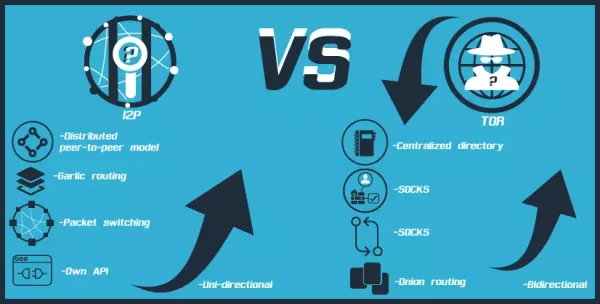Bitwarden_rs Deployment: TLS Automation and Database Encryption
Bitwarden_rs deployment enables sophisticated automated TLS provisioning, database encryption, and backup retention policies for comprehensive self-hosted password management.
Bitwarden_rs deployment enables sophisticated automated TLS provisioning, database encryption, and backup retention policies that provide comprehensive self-hosted password management through secure infrastructure deployment, data protection mechanisms, and operational automation while maintaining organizational control and privacy protection throughout credential management operations. Bitwarden_rs documentation demonstrates how Bitwarden_rs implementation combines password management functionality with enterprise security features to create robust self-hosted solutions that support organizational requirements, compliance objectives, and security policies while maintaining operational efficiency and user accessibility throughout password management and authentication processes.
Installation and Initial Configuration Management
Bitwarden_rs installation procedures implement comprehensive deployment strategies through system requirement assessment, dependency management, and configuration optimization that ensure reliable password management infrastructure while supporting organizational requirements and security objectives. Installation includes system preparation, dependency resolution, and initial configuration that establish secure password management capability while supporting scalability requirements and operational efficiency throughout deployment processes.
Docker security best practices provides Docker security guidance showing how container deployment and orchestration address isolation requirements through containerized deployment, resource management, and security isolation that protect password management infrastructure while enabling scalable deployment and maintenance procedures. Docker deployment includes container security, resource allocation, and orchestration management that ensure secure password management while supporting operational requirements and infrastructure optimization.
Initial configuration and administrative setup implement comprehensive security procedures through administrative account creation, security policy configuration, and access control establishment that ensure secure password management while supporting organizational governance and compliance requirements. Configuration includes administrative setup, security policy implementation, and access control configuration that establish secure operation while maintaining administrative oversight and organizational control throughout password management operations.
Network configuration and security hardening address infrastructure protection through network isolation, access controls, and security optimization that protect password management infrastructure while maintaining operational accessibility and performance requirements. Network security includes firewall configuration, access control implementation, and network hardening that ensure secure communication while supporting organizational requirements and operational efficiency throughout password management deployment.
Automated TLS Provisioning and Certificate Management
TLS automation with certbot documents TLS automation procedures showing how Let's Encrypt integration enables automated certificate provisioning through ACME protocol implementation, certificate generation, and renewal automation that ensure continuous HTTPS protection while minimizing administrative overhead and operational complexity. TLS automation includes certificate provisioning, renewal automation, and validation procedures that maintain secure communication while supporting operational efficiency and security compliance throughout password management operations.
Reverse proxy configuration provides reverse proxy configuration guidance showing how SSL termination and proxy management implement sophisticated traffic handling through encryption termination, load balancing, and request routing that optimize performance while maintaining security protection. Reverse proxy configuration includes SSL termination, traffic routing, and performance optimization that ensure secure communication while supporting scalability and operational efficiency throughout password management infrastructure.
Certificate renewal automation and monitoring implement comprehensive lifecycle management through automated renewal procedures, expiration monitoring, and alert generation that ensure continuous certificate validity while preventing service disruption. Renewal automation includes certificate monitoring, automated renewal, and alert procedures that maintain certificate validity while supporting operational continuity and security compliance throughout certificate lifecycle management.
High availability and certificate management best practices address redundancy requirements through multi-node deployment, certificate synchronization, and failover procedures that ensure service continuity while maintaining security properties and operational reliability. High availability includes redundancy planning, failover automation, and certificate management that ensure continuous service while supporting organizational requirements and operational objectives throughout password management deployment.
Database Encryption and Data Protection Implementation
Database encryption guides analyzes database encryption techniques showing how data-at-rest encryption implements comprehensive data protection through encryption key management, database encryption, and access control that protect stored credentials while maintaining performance and operational efficiency. Database encryption includes encryption configuration, key management, and access control that ensure data protection while supporting performance requirements and operational accessibility throughout password storage and retrieval operations.
Data-at-rest encryption and storage security address comprehensive data protection through encryption implementation, secure storage configuration, and access control mechanisms that protect sensitive credential data while maintaining operational performance and accessibility requirements. Storage security includes encryption management, secure configuration, and access control that ensure data protection while supporting organizational requirements and compliance objectives throughout password management operations.
Backup encryption and secure data handling implement comprehensive data protection procedures through encrypted backup creation, secure transfer protocols, and access control mechanisms that protect backup data while maintaining recovery capability and operational continuity. Backup security includes encryption procedures, secure handling, and access control that ensure backup protection while supporting disaster recovery and business continuity requirements throughout backup operations.
Access control and authentication security address user management requirements through multi-factor authentication, role-based access control, and session management that ensure secure credential access while supporting organizational security policies and compliance requirements. Authentication security includes access control implementation, multi-factor authentication, and session management that ensure secure access while maintaining user experience and operational efficiency throughout password management operations.
Backup Retention and Disaster Recovery Framework
Backup automation frameworks documents backup automation frameworks showing how automated backup procedures implement comprehensive data protection through scheduled backup creation, retention management, and validation procedures that ensure data availability while supporting compliance and operational requirements. Backup automation includes scheduling procedures, retention policies, and validation mechanisms that ensure backup reliability while supporting organizational governance and compliance objectives throughout data protection operations.
Retention policy implementation and compliance address regulatory requirements through systematic data lifecycle management, retention scheduling, and compliance reporting that ensure appropriate data retention while meeting organizational and regulatory requirements. Retention policies include lifecycle management, compliance procedures, and retention scheduling that ensure regulatory compliance while supporting operational requirements and organizational governance throughout data management operations.
Disaster recovery planning provides disaster recovery guidance showing how recovery planning and restoration procedures implement comprehensive business continuity through recovery procedures, restoration testing, and continuity planning that ensure service restoration while minimizing downtime and operational impact. Disaster recovery includes recovery planning, restoration procedures, and continuity testing that ensure business continuity while supporting organizational requirements and operational objectives throughout recovery operations.
Monitoring and validation of backup systems implement comprehensive backup assessment through backup verification, integrity testing, and recovery validation that ensure backup reliability while supporting disaster recovery and business continuity requirements. Backup monitoring includes verification procedures, integrity testing, and recovery validation that ensure backup effectiveness while supporting organizational requirements and operational objectives throughout backup system operation and maintenance activities.




